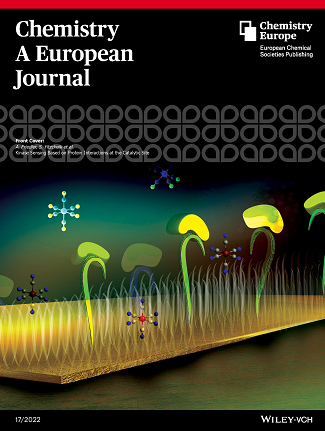O., S. ; H., S. ; E., M. ; Y.-J., C. ; A., F. ; S., Y. Kinase Sensing Based on Protein Interactions at the Catalytic Site.
Chem. Eur. J. 2022.
LinkAbstract
The role kinases play in regulating cellular processes makes them potential biomarkers for detecting the onset and prognosis of various diseases, including many types of cancer. Current kinase biosensors, including electrochemical and radiometric methods, rely on sensing the ATP-dependant enzymatic phosphorylation reaction. Here we introduce a new type of interaction-based electrochemical kinase biosensor that does not require any chemical labelling or modification. The basis for sensing is the interactions between the catalytic site of the kinase and the phosphorylation site of its substrate rather than the phosphorylation reaction. We demonstrated this concept with the ERK2 kinase and its substrate protein HDGF, which is involved in lung cancer. A peptide monolayer derived from the HDGF phosphorylation site was adsorbed onto a gold electrode and was used to sense ERK2 without ATP. The sensitivity of the assay was down to 10 nM of ERK2, corresponding with the range of its cellular concentrations. Surface chemistry analysis confirmed that ERK2 was bound to the HDGF peptide monolayer. This increased the permeability of redox-active species through the monolayer and resulted in ERK2 electrochemical sensing. Since our detection approach is based on protein-protein interactions and not on the enzymatic reaction, it can be further utilized for more selective detection of different types of enzymes.

N., J. P. ; E., M. ; O., S. ; Y.-J., C. ; S., Y. ; A., F. Electrochemical biosensors based on peptide-kinase interactions at the kinase docking site.
Biosens. Bioelectron. 2022.
LinkAbstractKinases are important cancer biomarkers and are conventionally detected based on their catalytic activity. Kinases regulate cellular activities by phosphorylation of motif-specific multiple substrate proteins, resulting in a lack of selectivity of activity-based kinase biosensors. We present an alternative approach of sensing kinases based on the interactions of their allosteric docking sites with a specific partner protein. The new approach was demonstrated for the ERK2 kinase and its substrate ELK-1. A peptide derived from ELK-1 was bound to a gold electrode and ERK2 sensing was performed by electrochemical impedance spectroscopy. We performed a detailed analysis of the interaction between the ELK-1 peptide and the kinase on gold surfaces. Atomic force microscopy, variable angle spectroscopic ellipsometry, X-ray Photoelectron Spectroscopy, and polarization modulation IR reflection-absorption spectroscopy analysis of the gold surface revealed the adsorbed layer of the ERK2 on the peptide monolayer. The sensors showed a high level of target selectivity for ERK2 compared to the p38γ kinase and BSA. ERK2 was detected in its cellular concentration range, 0.5–2.0 μM, and the limit of detection was calculated to be 0.35 μM. Using the flexibility of peptide design, our method is generic for developing sensitive and substrate-specific biosensors and other disease-related enzymes based on their interactions.
